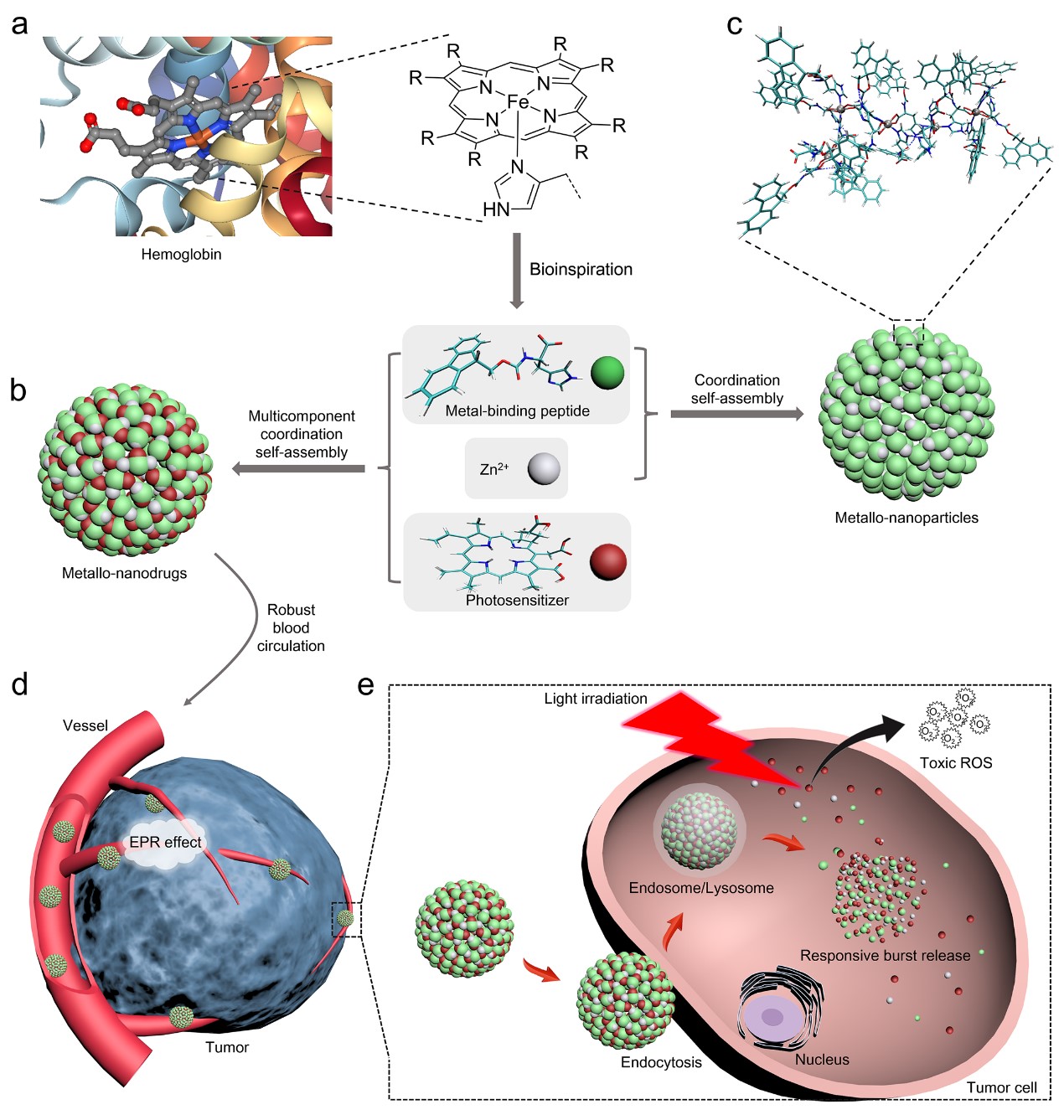Cancer is the first killer to human health all over the world. Photodynamic therapy, distinguished from conventional chemo- and radio- antitumor therapy, is an emerging therapeutic modality based on combining photosensitizers and light with endogenous oxygen to collectively exert a selective cytotoxicity toward tumor cells.
With advances in nanotechnology, tremendous nanoengineered photosensitizers have been proposed in order to improve the stability, targeting and precision. However, the photosensitizer aggregation in nanomaterials inhibits the generation of reactive oxygen species. A burst release of photosensitizers is desired once they accumulate in the targeted tumor . Hence, how to design a smart nano-photosensitizer based on aforementioned contradiction is challenging.
Recently, the research group led by Prof. YAN Xuehai at Institute of Process Engineering of Chinese Academy of Sciences (IPE, CAS) reports a novel multicomponent coordination self-assembly strategy based on combination of histidine-containing short peptides, photosensitizers, and metal ions to design and engineer metallo-nanodrugs for antitumor therapy. The strategy was inspired by metalloprotein, which integrate both metal ions and organic cofactors through coordination interactions to stabilize their conformational structure and realize their biological function in organism.
The researchers designed peptides as starting building blocks for the coordination self-assembly. In the assistance of zinc ions, the designed histidine-containing peptide or histidine derivative and a photosensitizer self-assembly into metallo-nanodrugs. The metallo-nanodrugs have uniform sizes, well-defined nanosphere structures, and high loading capacities. Most importantly, the metallo-nanodrugs have robust colloidal stability and ultrasensitive responses to pH and redox stimuli due to the integration of multiple coordination and non-covalent interactions. These properties prolong blood circulation, increase tumor accumulation, and enhance the photodynamic tumor therapeutic efficacy.
Such metallo-nanodrugs integrate robust blood circulation and targeted burst release in a single nanodrug for the first time, holding promise for developing next-generation smart nanomedicines. The researchers hope that the novel strategy could be further investigated and optimized to advance clinical translation of metallo-nanodrugs for diagnosis and treatment of various diseases.
These results were published in a paper entitled "Smart Peptide-Based Supramolecular Photodynamic Metallo-Nanodrugs Designed by Multicomponent Coordination Self-Assembly" in the Journal of the American Chemical Society. DOI: 10.1021/jacs.8b04912.
This work was supported by National Natural Science Foundation of China, the Talent Fund of the Recruitment Program of Global Youth Experts, the Key Research Program of Frontier Sciences of the Chinese Academy of Sciences, and the CAS President's International Fellowship Initiative.

Schematic illustration of supramolecular metallo-nanodrugs construction, organization pattern, accumulation during robust blood circulation, cellular internalization, burst release, and activation of the photosensitiezers for efficient photodynamic therapy. (Image by LI Shukun)
Media Contact:
LI Xiangyu
International Cooperation Office, Institute of Process Engineering, Chinese Academy of Sciences, Beijing 100190, P. R. China.
E-mail: xiangyuli@ipe.ac.cn
Tel: 86-10-62551358
 Search
Search




 京公网安备110402500047号
京公网安备110402500047号